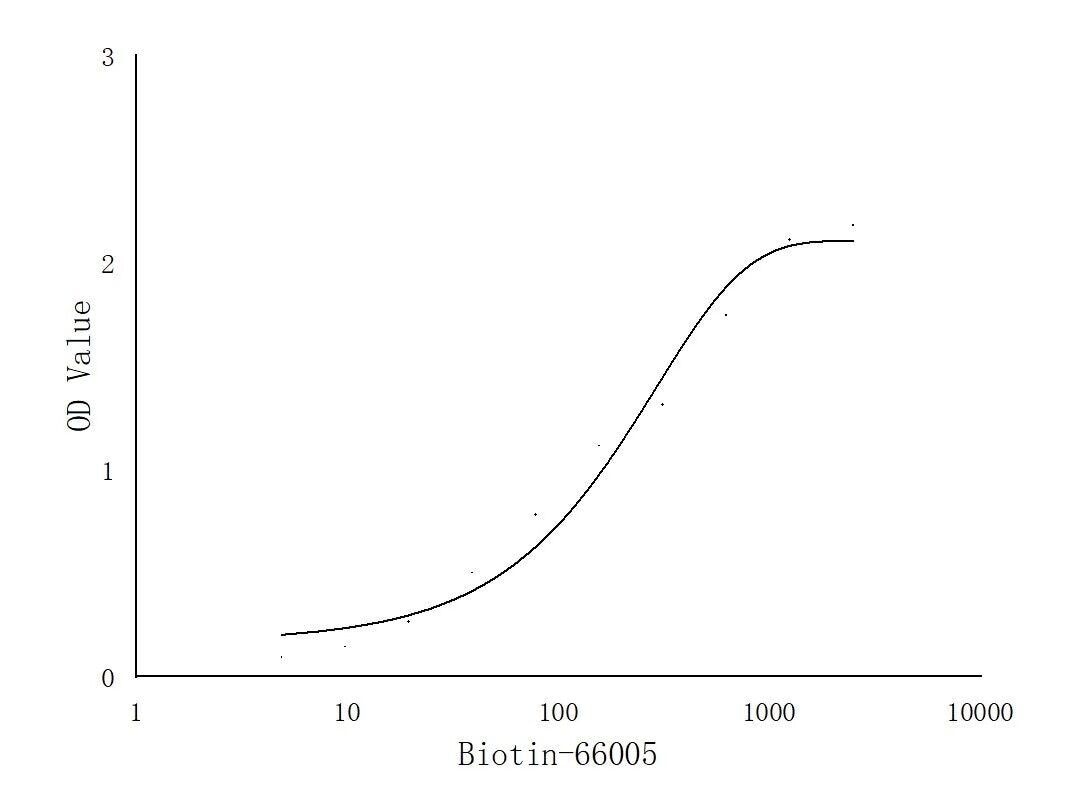6*His, His-Tag Monoklonaler Antikörper
6*His, His-Tag Monoklonal Antikörper für ELISA
Wirt / Isotyp
Maus / IgG1
Getestete Reaktivität
rekombinanten Protein
Anwendung
ELISA
Konjugation
Biotin
CloneNo.
1B7G5
Kat-Nr. : Biotin-66005
Synonyme
Geprüfte Anwendungen
| Erfolgreiche Detektion in ELISA | Recombinant protein |
Empfohlene Verdünnung
| Anwendung | Verdünnung |
|---|---|
| Enzyme-linked Immunosorbent Assay (ELISA) | ELISA : 1:5000-1:50000 |
| It is recommended that this reagent should be titrated in each testing system to obtain optimal results. | |
| Sample-dependent, check data in validation data gallery | |
Produktinformation
Biotin-66005 bindet in ELISA 6*His, His-Tag und zeigt Reaktivität mit rekombinanten Protein
| Getestete Reaktivität | rekombinanten Protein |
| Wirt / Isotyp | Maus / IgG1 |
| Klonalität | Monoklonal |
| Typ | Antikörper |
| Immunogen | Peptid |
| Vollständiger Name | 6*His, His-Tag |
| Berechnetes Molekulargewicht | 0.84 kDa |
| Gene symbol | |
| Gene ID (NCBI) | |
| Konjugation | Biotin |
| Form | Liquid |
| Reinigungsmethode | Protein-G-Reinigung |
| Lagerungspuffer | PBS with 50% glycerol, 0.05% Proclin300, 0.5% BSA |
| Lagerungsbedingungen | Bei -20°C lagern. Vor Licht schützen. Nach dem Versand ein Jahr stabil. Aliquotieren ist bei -20oC Lagerung nicht notwendig. 20ul Größen enthalten 0,1% BSA. |
Hintergrundinformationen
Protein tags are protein or peptide sequences located either on the C- or N- terminal of the target protein, which facilitates one or several of the following characteristics: solubility, detection, purification, localization and expression. His-tag is often used for affinity purification and binding assays. Expressed His-tagged proteins can be purified and detected easily because the string of histidine residues binds to several types of immobilized metal ions, including nickel, cobalt and copper, under specific buffer conditions. The His-tag antibody is a useful tool for monitoring of the His-tagged proteins, and recognizes His-tags placed at N-terminal, C-terminal, and internal regions of fusion proteins expressed in bacteria, insect, and mammalian cells.


